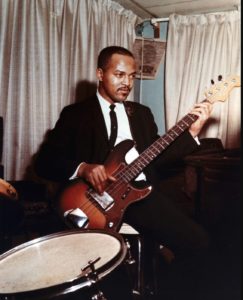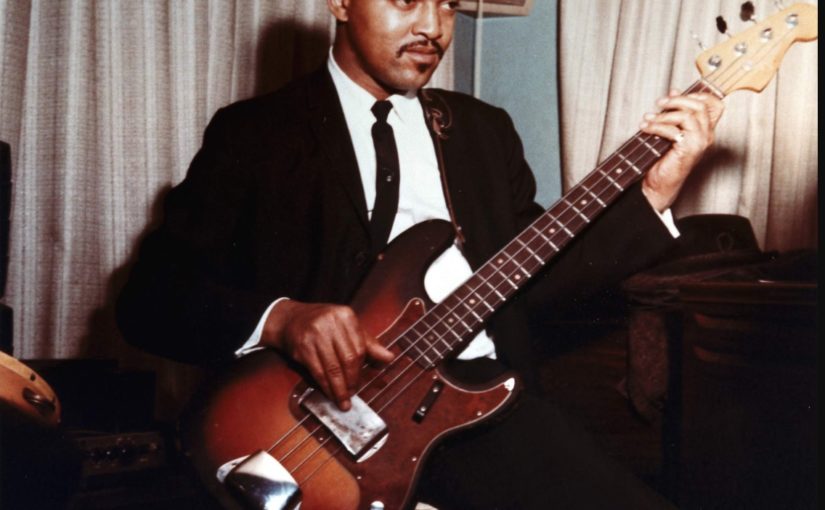The bass player is probably the least sought after role in any band.
However, I’d argue bass players are the most under-appreciated members of rock bands.
Perhaps it is because they hardly get the spotlight, destined forever to be in the far back of band photo shoots and in their own little space at the back of the stage by the drummer. That doesn’t usually appeal to someone with a desire to make it big and become rich and famous.
Personally, being the cool guy in the back quietly driving the whole musical vehicle of each song is pretty darn appealing, but apparently I’m in the minority.
Whatever the reason, it is wholly false.
There are slews of amazing bass players, and it is impossible to give them all mention here. What I have elected for instead is to showcase a few bass players that take pioneering approaches to playing the bass.
The result is a breaking away of all you thought you knew about what a bass guitar, and the bass player, is capable of.
Randy Meisner
Randy Meisner is the fingers behind what I consider to be one of the most addicting bass lines of ’70s rock.
Yes, boys and girls, I am referring to the one and only Eagles’ “One of These Nights” title track.
In general, 1975’s “One of These Nights” was iconic for the band, as it showed them sampling on stylings outside of their genre without losing themselves as a band.
Due to this stylistic departure, Meisner’s bass playing had the opportunity to really bring out and expand his bass playing. Just listen to how his bass line adds accents and interesting background to Frey and Felder’s guitar on “Too Many Hands.”
Meisner’s disco groove is what makes this song such a hit to me. Take it out and the song loses its cool confident step.
There is so much to break through as a bass player in order to gain some of the interest over the masterful layered guitars. However, Meisner perfectly captures his windows and lets his instrument shine.

James Jamerson is responsible for some of the most memorable beats of Motown’s heyday during the ‘60s and ‘70s.
James Jamerson
James Jamerson spent his life in obscurity even though he was the mastermind behind umpteen Motown hits of the ’60s and ’70s.
As a session bass player for Motown Records, he laid down the bass line for everything from the iconic 1967 recording of “Ain’t No Mountain High Enough” with Tammi Terrell and Marvin Gaye, to The Temptations’ hit “Get Ready.”
While Jamerson never took over the melodic role instrumentally, his bass lines are easily heard in every song. With groovy beats and perfect placement to not only back up the song, but also add flavor to the song, Jamerson deserves the pedestal he is placed on today for his musical prowess.
He is the best argument to those who think bass guitar takes no skill, or doesn’t affect a song overall.
His style has influenced countless bass players since.
Sam Kiska of the rising Michigan rock band, Greta Van Fleet, credits listening to Motown and Jamerson’s bass lines for teaching him how to play the bass.
Just like Jamerson, the youngest Kiska brother’s bass lines are not destined for mere background, but brings in an added flavor to the songs. It’s most evident in the title track from their first EP, “Black Smoke Rising,” where Kiska adds scale runs and further back beats during the breakdown and subsequent buildup halfway through the track.
Armistead Burwell Smith IV
Armistead Burwell Smith IV, also known as ABSIV for short (because his name is probably only rivaled in length by the bellhop from “The Suite Life of Zach and Cody”), is yet another example of bass players proving the bass is more than two boring chord changes.
In his work, ABSIV is a prime example of how to seamlessly flow between support and melody.
With band Pinback, consisting of ABSIV and guitarist Rob Crow, bass takes the majority of the focus instrumentally with intricate rhythms and pedal effects that seamlessly compliment Crow’s guitar.
The pedal effects are so expertly chosen it is difficult to tell which is guitar and which is bass in cases where they play together. If you aren’t familiar with Pinback’s twisted, dreamy postmodern indie, you should be pulling them up on your Spotify immediately.
Philip Frobos
If you read the paper last Thursday, which I hope you did, you should recognize this name as the lead singer and bass player of indie band Omni. If not, consider this an introduction, and feel free to head online to read the interview from last week.
In contrast to Dunn, Frobos is largely the focus in his band’s instrumental arrangement.
Originally becoming a bass player because the band he wanted to join in grade school already had a lead guitar player and a drummer, Frobos has surely developed his own style of bass that makes it a treat to hear.
A song off of their new album that especially showcases Frobos’ knack for turning the bass into the melodic focus is “Calling Direct.” The guitar takes a back seat, instead adding accents with metallic brightness while Frobos’ bass keeps its deep and rich, providing needed contrast.
Definitely a band to check out for uncommon bass playing.
Tony Levin
Tony Levin deserves mention here not only for his bass skills, but for his invention.
Dubbed “funk fingers,” Levin designed short drumsticks to be worn on two fingers of the “strumming hand” to give the notes a unique airy quality. They also give added interest with the sound of the drumsticks hitting the strings.
Levin is seriously mesmerizing to watch, so it is worth it to look him up on YouTube demonstrating his ingenious invention.
